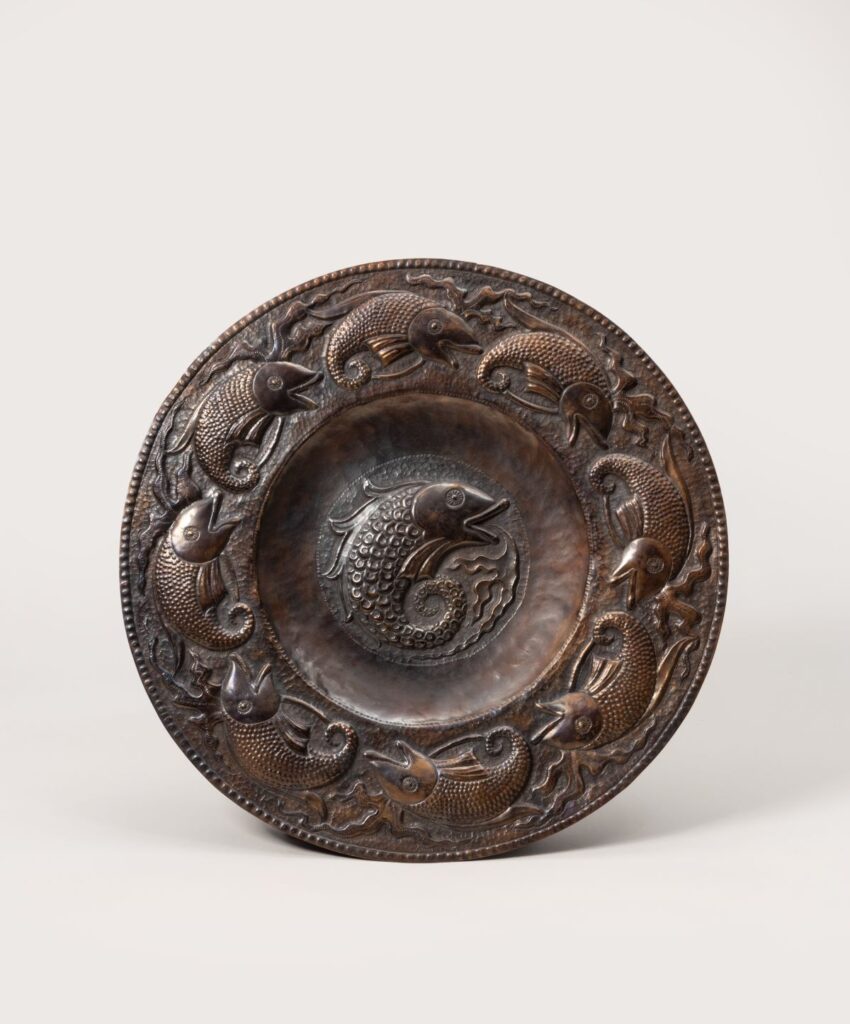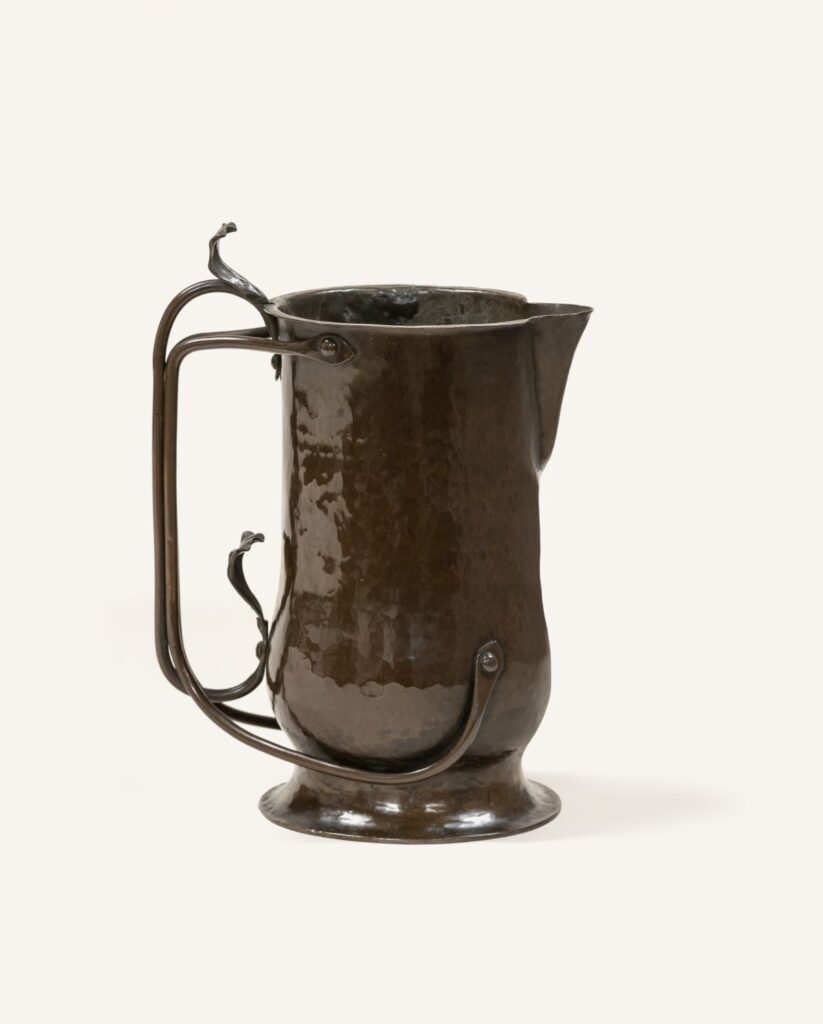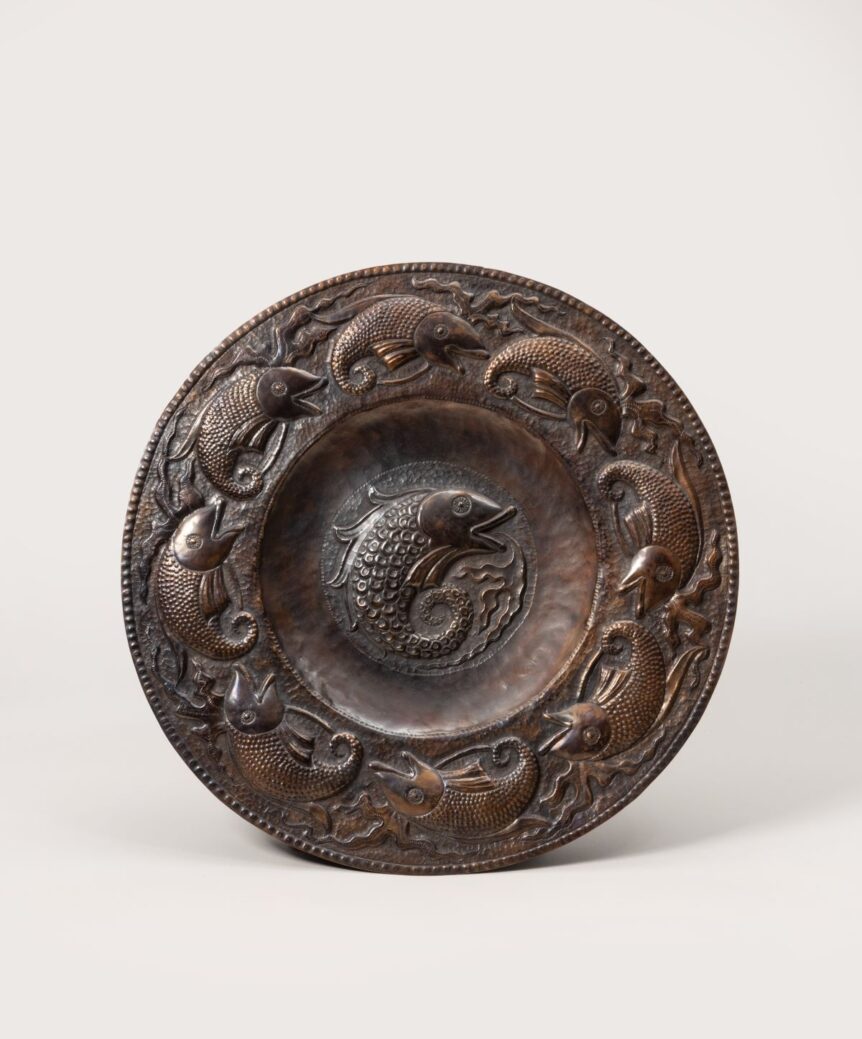
Copper gets no respect. It’s the Rodney Dangerfield of metals. Think of copper and what comes to mind first? Pennies—coins that hardly anyone wants anymore—and plumbing.
Yet copper has a noble place in human history. One of the few metals that is workable in its natural, unalloyed state, copper was the first metal that our ancient ancestors used to fabricate tools and other objects, starting around 9,000 bc.
Copper deserves some love, and it’s getting it at the Jordan Schnitzer Museum of Art on the campus of the University of Oregon with the exhibition The First Metal: Arts and Crafts Copper.
Copper was the perfect metal via which to express central tenets of the arts and crafts movement of the late nineteenth century, which included advocacy for the use of honest materials; the belief that art and beauty should be accessible to all; and the conviction that artisanal work conferred upon the laborer a sense of dignity and self-worth. Copper was as it came from the earth: as authentic as wood. Casting a warm, ruddy glow, copper wasn’t flashy like gold or silver, nor nearly as expensive—meaning almost anyone could afford copper handiwork. As well, copper is malleable and holds the marks of the artisan’s hammer—a copper object forms a record of its own making.

The show, curated by Marilyn Archer with the help of consultant Margo Grant Walsh, includes fifty-seven works, mostly from the United Kingdom and the United States. All are useful designs; some are simple in form, others have intricate ornamentation. A standout among the former is a pitcher with a gently hammered surface and two subtle leaf-shaped flourishes produced in Britain by the Birmingham Guild of Handicraft in about 1900; a notable item in the latter group is a charger with a playful repoussé fish motif made by the British artisan John Pearson in 1896.
This admirable exhibition is accompanied by a beautifully illustrated catalogue with essays by Mary Greensted and Jonathan Clancy—two scholars whose illuminating thoughts are worth more than a penny.
The First Metal: Arts and Crafts Copper • Jordan Schnitzer Museum of Art, University of Oregon, Eugene • May 6 to November 3 •jsma.uoregon.edu

